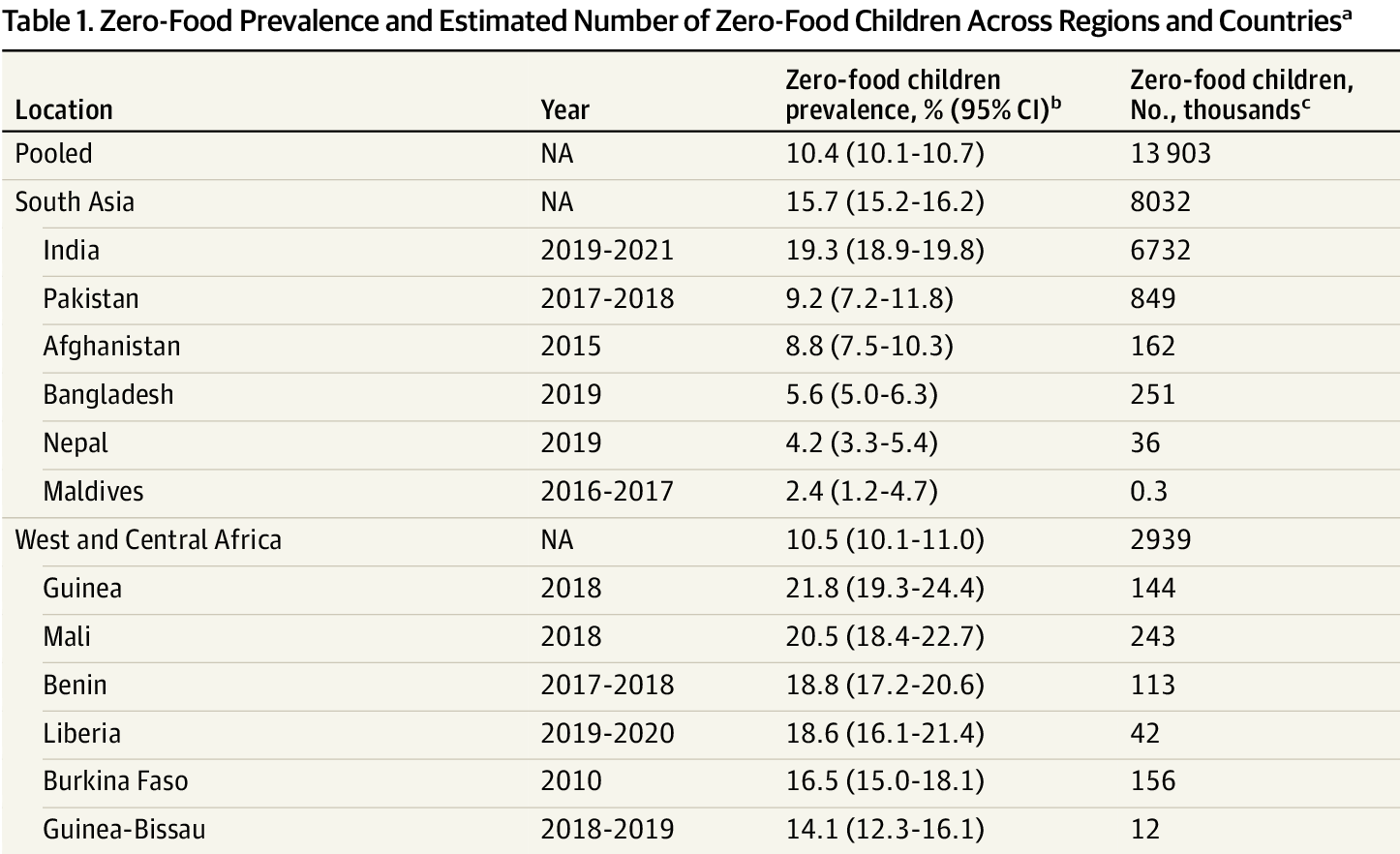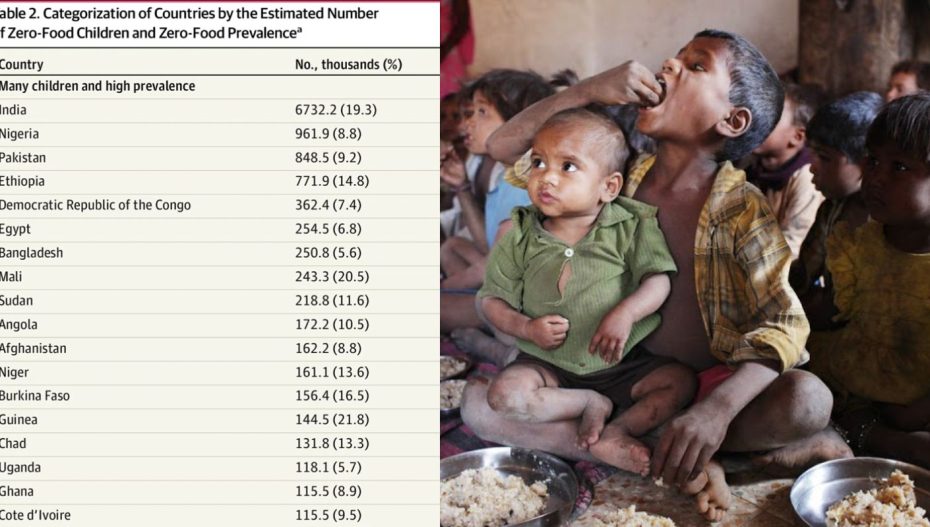Millions of children in India are facing a serious challenge – hunger. A recent study published in a prestigious medical journal revealed that India has the highest number of children, a staggering 67 lakh, who did not consume any food or milk in the past 24 hours. This category, termed “zero-food children,” is particularly vulnerable as they fall between the ages of 6 and 23 months, a critical development period. This age group is particularly vulnerable to undernutrition if not adequately fed, as it’s crucial for growth and development.
The study, conducted across 92 low- and middle-income countries, found India with the highest number of “zero-food” children. This translates to nearly half of all such children identified in the entire survey. “Zero-food” children in this context are defined as those who haven’t had any milk, formula, solid, or semisolid food in the past day.

The study emphasizes the importance of introducing solid foods alongside breastfeeding, as breast milk alone isn’t sufficient to meet a child’s nutritional needs during this critical development window.
While India has the highest number, it also ranks third globally in terms of the percentage of children classified as “zero-food” (19.3%). West African nations Guinea (21.8%) and Mali (20.5%) hold the top two spots. Nigeria follows India with the second-highest number of “zero-food” children (962,000) and Pakistan comes in third (849,000).
The data used in the research comes from various surveys conducted between 2010 and 2022. It’s important to note that the COVID-19 pandemic might have impacted the results, particularly for India’s data collected in 2019-2021. The pandemic could have potentially increased the prevalence of “zero-food” children in the country.
Indian Air Force’s Tejas Aircraft Crashes in Jaisalmer, Pilot Safe. Read More












